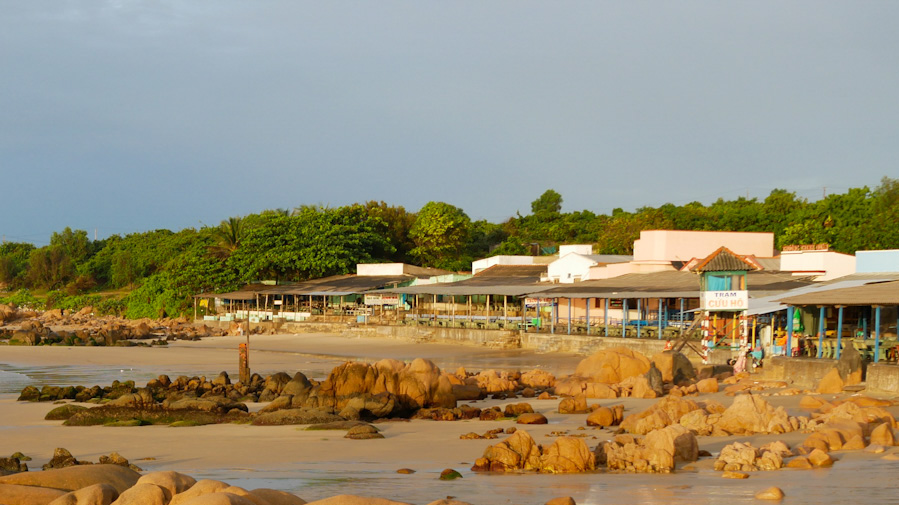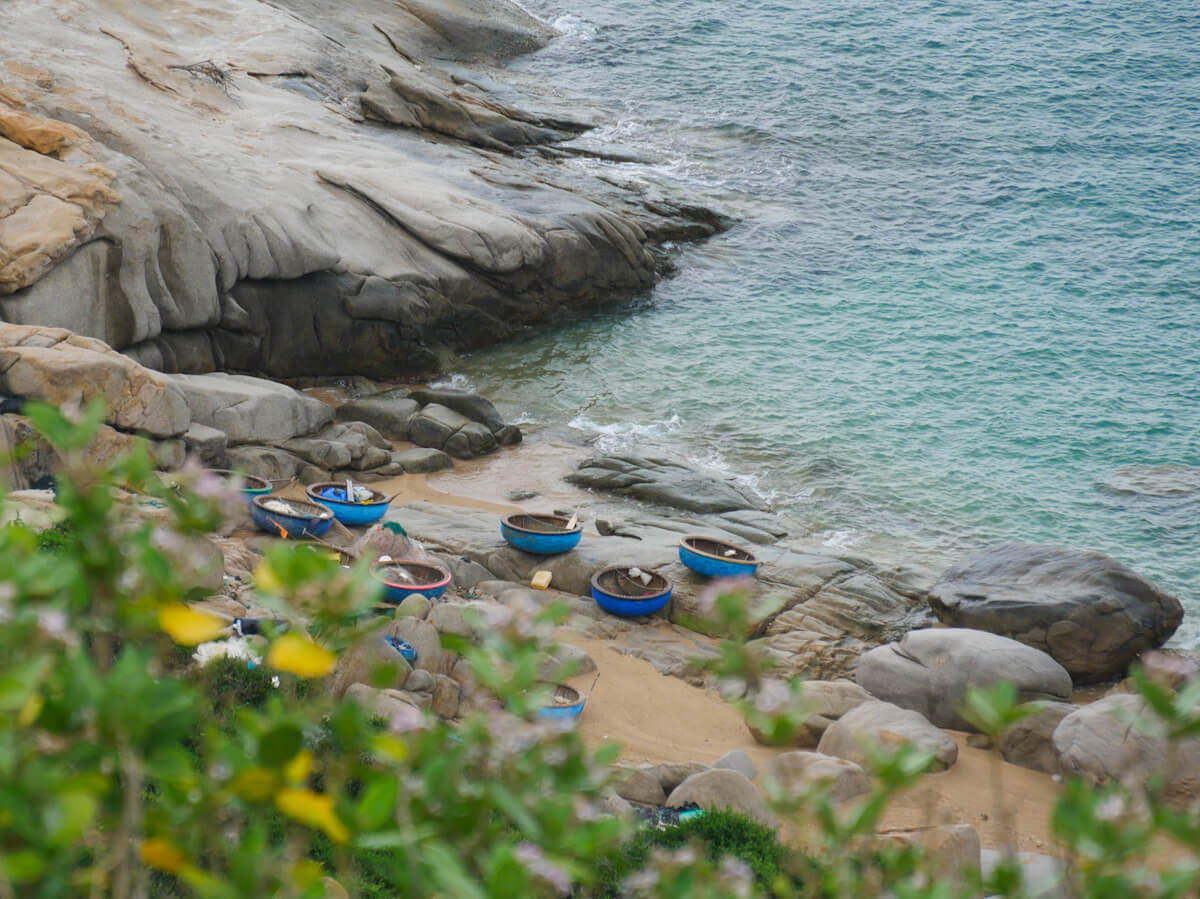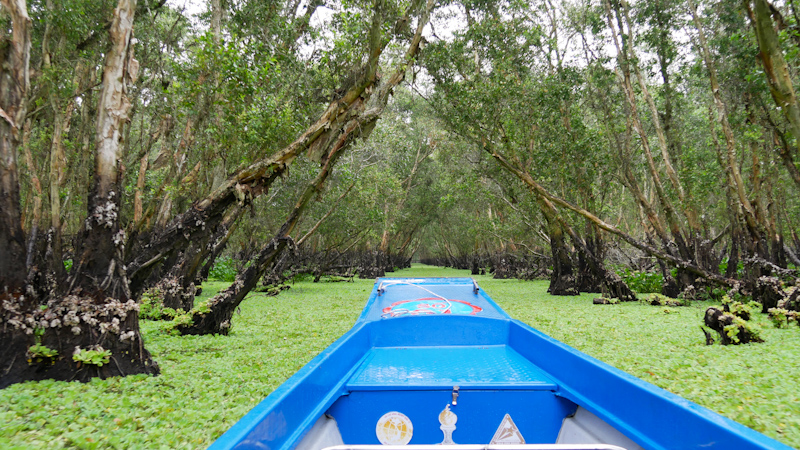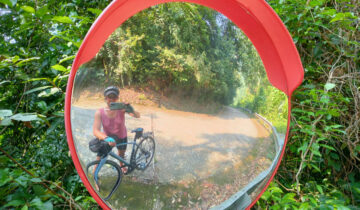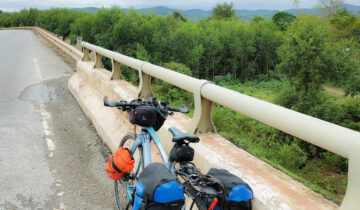The southern coast route continues with more dramatic coastal vistas along the Mui Dinh Cape.
Mui Dinh Cape is yet another scenic promontory featuring a recently-built tourist road tailor made for cycle touring. It’s the perfect sequel (or prequel) to the Vinh Hy Bay coast road – shorter, wilder and more remote.
My suggested route ends at the tiny locality of Co Thach, home to a wonderful temple complex that’s a hidden gem still completely off the radar for foreign tourists.

But the star of the show here is the epic Mui Dinh cost road – dubbed the ‘Dragon’s Graveyard’ route by Vietnam Coracle. If you’re coming through on a weekend, the smooth, modern tourist road around the cape is likely to have very little traffic – making for fabulous cycling.

Phan Rang’s sand dunes
Escaping Phan Rang city involves a boring 15 to 20 kilometre stretch of road through a light industrial area. Watch out for guard dogs here.
Factories slowly make way for desert plains (yes, desert) as the the landscape opens up into a wide, flat, vista. Yellow and rust red sand dunes flank the road and yesterday’s lush jungle is replaced with prickly scrub. Wind turbines cycle lazily in the distance.
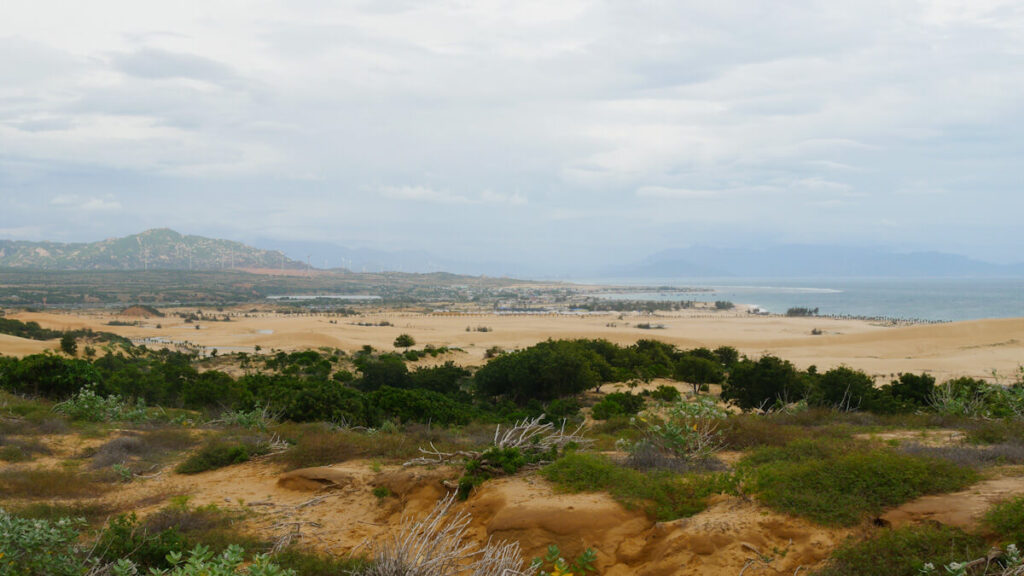
It’s stark but wonderful – this is a different Vietnam. Quan Com Bo, with a definite wild west feel is the last food shop for a while though I can see a cowboy themed tourist park opened up down the road.
(Tip: Winds here can be fierce. It’s a great idea to try cycle the southern coastline with the prevailing winds, which means riding north to south between November and late March).
The Mui Dinh Cape Road
The Mui Dinh was obviously built with tourism in mind, with safety barriers and plenty of stopover points for admiring the view. On my visit the road was all but empty, adding to the feeling of an adventure more remote than it really is.

Vegetation becomes more prevalent as you climb up around the cape, though the landscape is dominated by rocks and boulders everywhere, as if scattered about by a giant sky god having a temper tantrum. The Vietnam Coracle website has dubbed this coast road ‘the Dragon’s Graveyard’).
Semi-wild cows and goats gaze peacefully at passes-by as they graze on the grass, beneath boulders perched at impossible angles up on the hilltops.
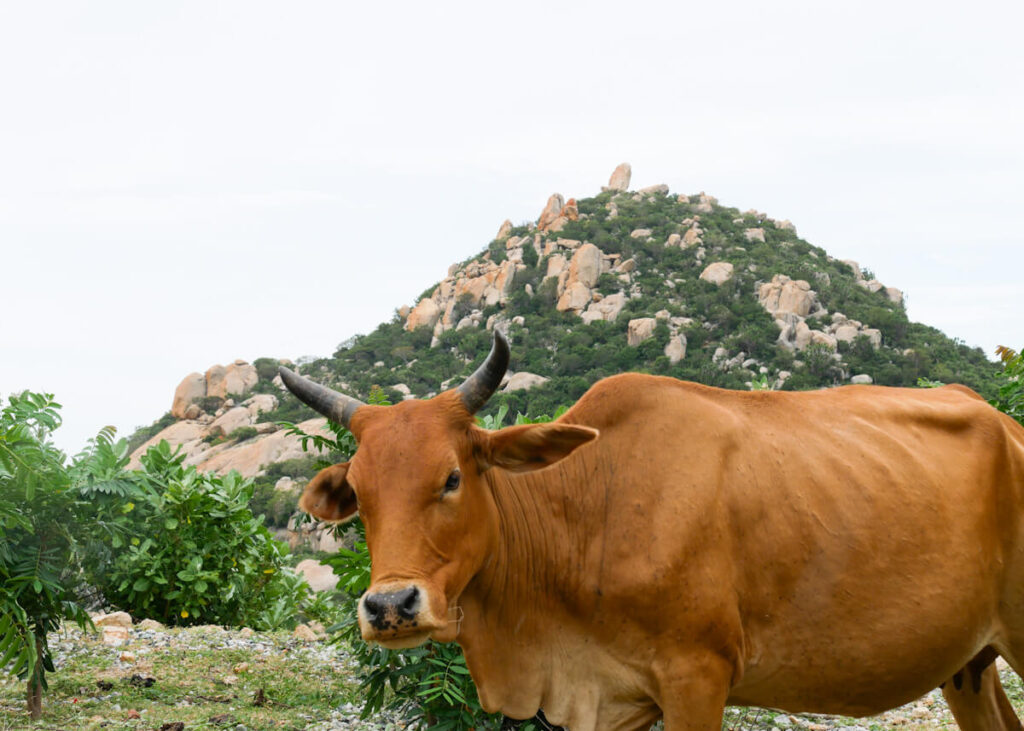
When I came through through here a rain storm passed through, leaving trailing tendrils of mist and the rock formations. All this, combined with the road’s smooth condition made this a fantastic cycling experience.
There are excellent views over the little coves and fishing boats below, especially as you round the cape and start looking back to Ca Na.
The road finally makes its descent to Ca Na threading its way between the ocean and a vast salt field.
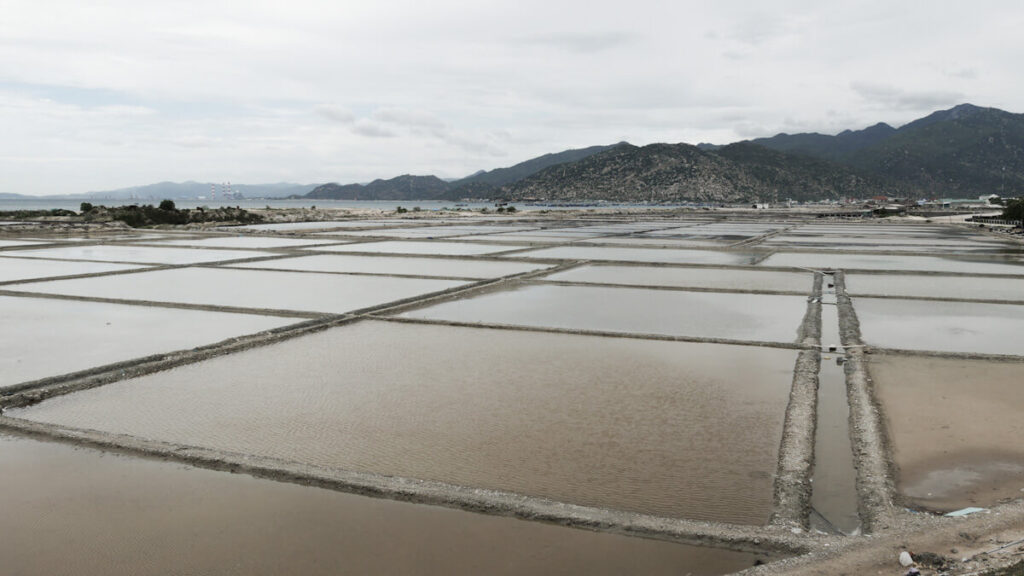
Ca Na and a ride along Highway One
The little town of Ca Na revolves around the industries of salt and fishing, with the red and white tower of the Vinh Tan power station just a few kilometres down the road.

Just off the highway there’s also a cluster of restaurants and hotels offering views and rooms right on the water. These are geared at big domestic travel groups, but quite nice just the same. The Ca Na Hotel has a kind of walled private beach at the back where you can swim in the ocean along with changing rooms, available for lunchtime diners as well as people staying there.
The main Ca Na town, a traditional fishing village, is actually located between salt fields on a wedge of land that’s almost like an island. This may be a better place to stop for lunch and a wander around the small streets
Continuing south, there’s no option other than Highway One for the next 27 kilometres. While Highway One is usually a road to avoid at all costs, here is is relatively OK for cycling, with a broad shoulder. It’s also quite scenic in sections, and if you’re riding south to north there will be great views of the Mui Dinh mountain range.
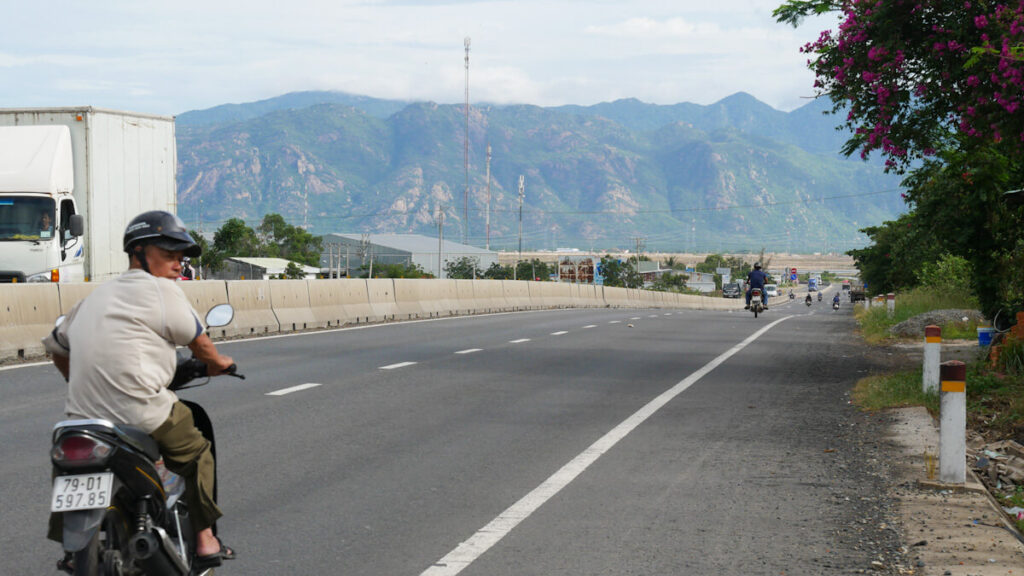
After Highway One, its a relief to return to make the turn off back onto quiet back roads at the pleasant town of Lien Huong where you can reward yourself with a coffee.
The route continues to be unremarkable, the landcape semi-arid but well-punctuated with shady fruit trees, shops and cafes.
Co Thach and a marvellous temple
A long, flat stretch along Vo Thi Sau Street takes you to the small village of Co Thach. On first glance this is not the most appealing place to stay, and it’s easy to be put off by the row of characterless mini hotels or ramshackle (and very old school) local guesthouses on the beach.
HOWEVER, this town is home to one of the most lovely temples I have visited in Asia, Chua Co Thach
It is also incredibly quiet, especially if you are here on a weekday, and there’s a
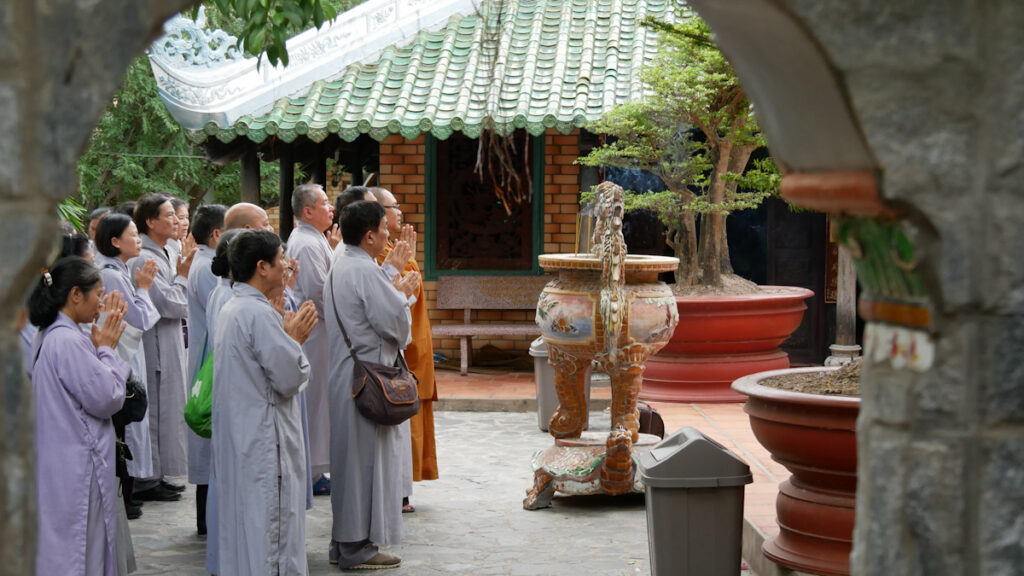
Very well known amongst Vietnamese, the temple is actually more of a park or a complex, with various buildings, shrines and decorative features scattered across a hillside.
This whole south coast region of Vietnam is characterised by fantastical, distinctive rock formations and these are integrated creatively into the site. There are little secret paths, doorways, staircases and viewpoints, giving the impression of walking through an oversized bonsai garden.
If possible, the temple is best explored (and photographed) in the soft late afternoon or early morning light.

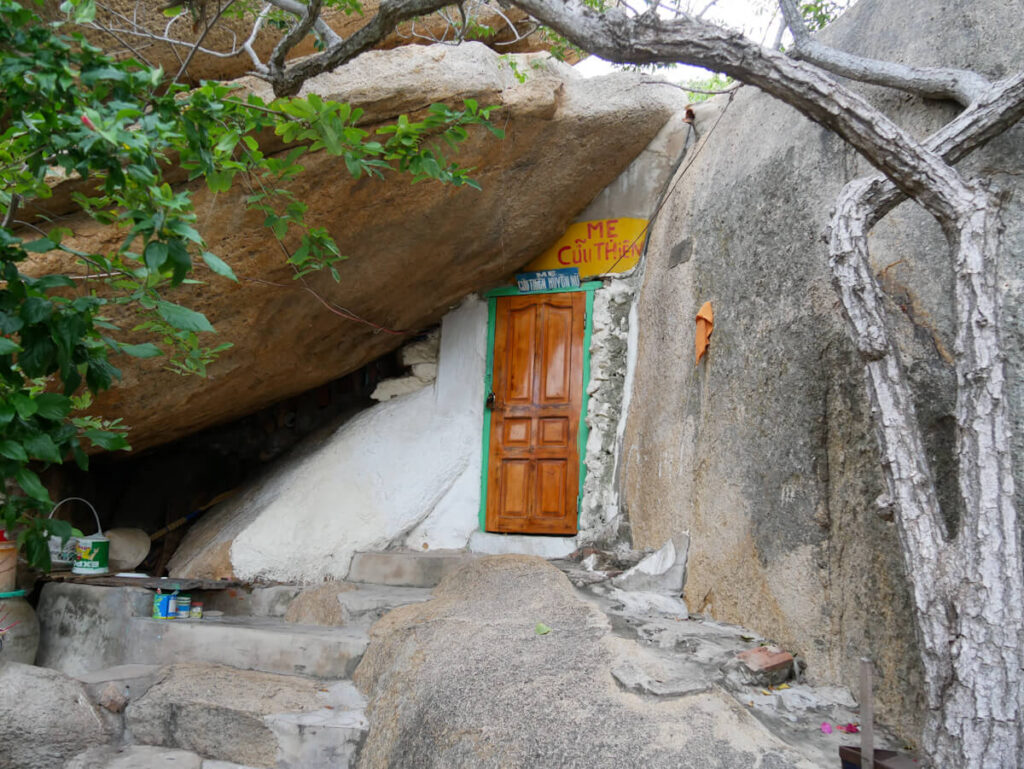
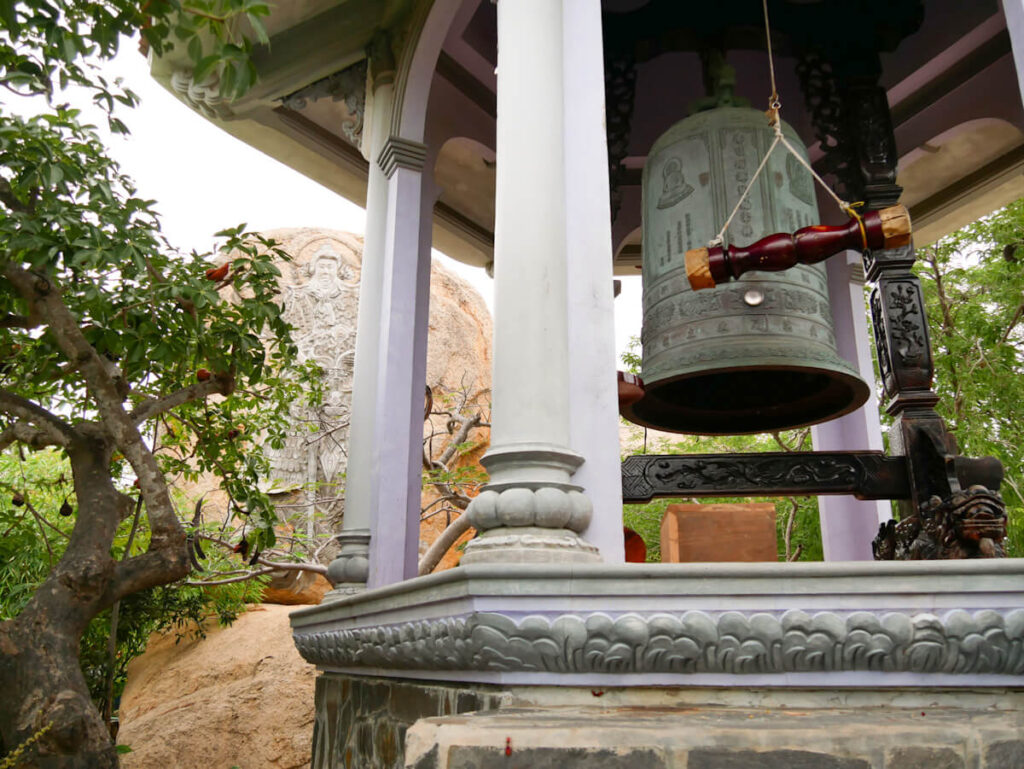
Multicolour stones and sunsets
Co Thach is also famous amongst locals for its colourful pebbles and cool rock formations on the beach. Sunset or early morning is really the time to see this effect, when the colours glow with deep oranges and purples.


It really is a pretty sight, and all the more enjoyable given Co Thach is is so well and truly off the beaten path for international tourists. I had a hard time putting the camera away!
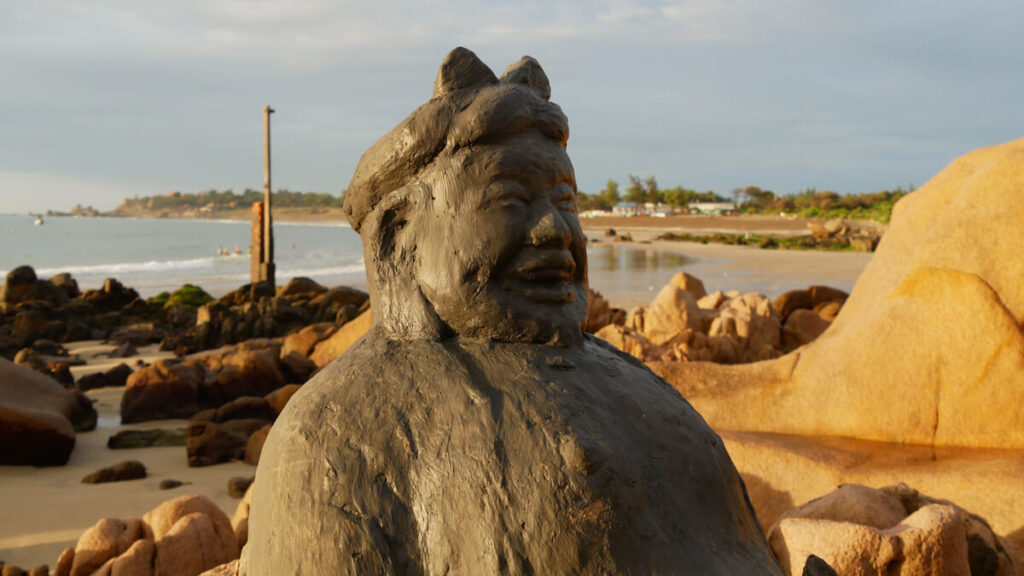
Staying and eating in Co Thach
Co Thach’s night market on Vo Thi Sau is the only place to eat in Co Thach – in fact I had some of the best (and cheapest) fresh fish there in all my time in Vietnam, and an equally delicious noodle soup for breakfast.

I stayed at the Co Thach ‘resort’, a neglected hotel that looked abandoned but nevertheless had a swimming pool and bungalows on the water. It looks like this site has since become even more run down, so a better option would be to check out the plethora of Nha Nghi (guesthouses) on Vo Thi Sau street.
There are local guesthouses on the beach though these may be too ‘rough and ready’ for most travellers.
A new mid-range resort hotel with swimming pool has popped up right on the beach at Co Thach, perhaps signalling change for this area. Slightly out of town on the approach road, Le’s Homestay also looks like a solid place to stay.
You’ll want a good sleep and an early morning to tackle the next phase of the journey, a ride through Vietnam’s scorching desert sand dunes.
